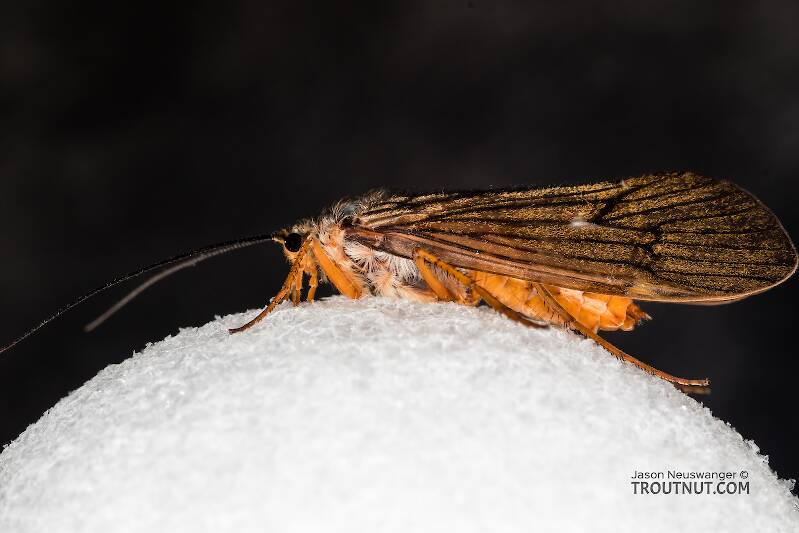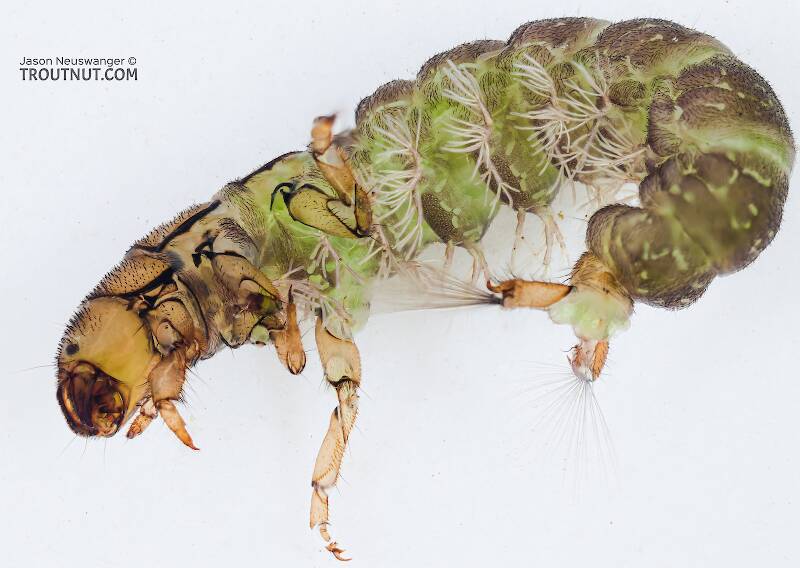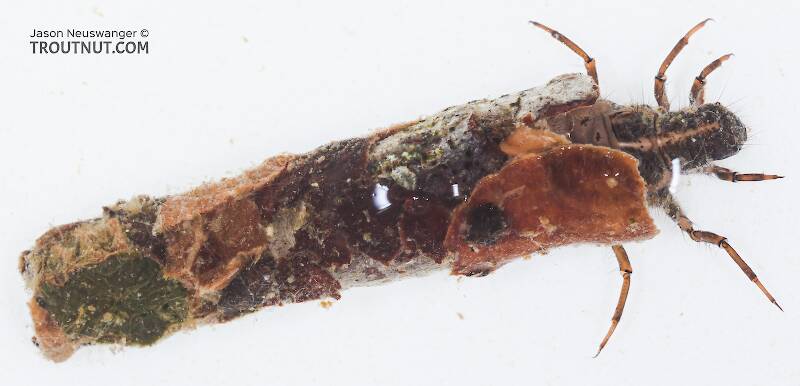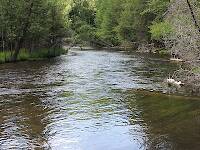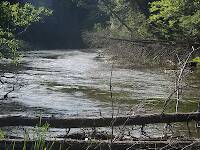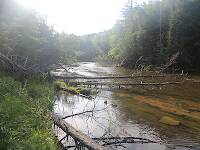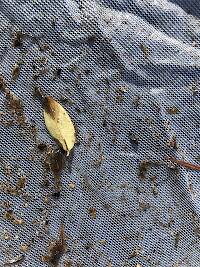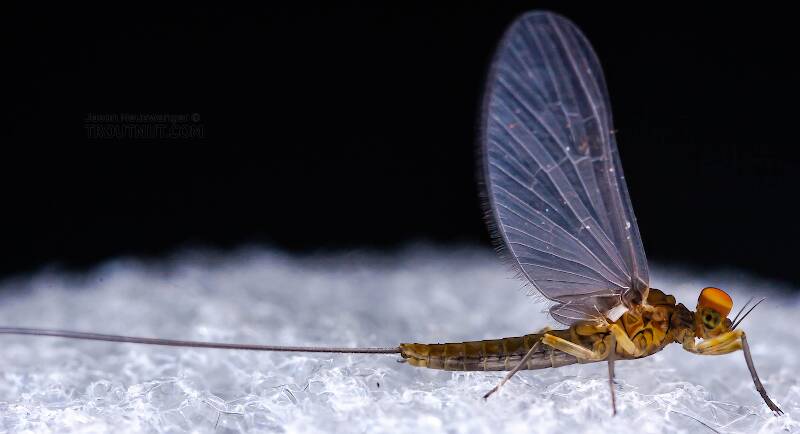
Blue-winged Olives
Baetis
Tiny Baetis mayflies are perhaps the most commonly encountered and imitated by anglers on all American trout streams due to their great abundance, widespread distribution, and trout-friendly emergence habits.
Featured on the forum
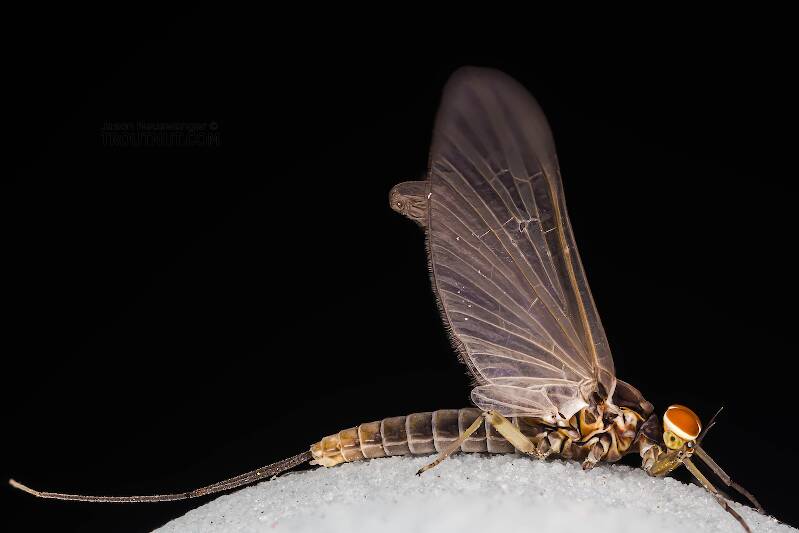
This dun emerged from a mature nymph on my desk. Unfortunately its wings didn't perfectly dry out.

Troutnut is a project started in 2003 by salmonid ecologist Jason "Troutnut" Neuswanger to help anglers and
fly tyers unabashedly embrace the entomological side of the sport. Learn more about Troutnut or
support the project for an enhanced experience here.
This topic is about the Insect Order Trichoptera
Some say caddisflies are even more important than mayflies, and they are probably right. The angling world has taken a while to come to terms with this blasphemy. Caddis imitations are close to receiving their fare share of time on the end of the tippet, but too many anglers still assume all caddisflies are pretty much the same.Caddis species actually provide as much incentive to learn their specifics as the mayflies do. There is just as much variety in their emergence and egg-laying behaviors, and as many patterns and techniques are needed to match them. Anglers are hampered only by the relative lack of information about caddisfly behavior and identification.
Example specimens
Dirremeang on Dec 27, 2007December 27th, 2007, 5:16 pm EST
Hi, Everyone! I'm a student doing my field studies on aquatic insects! Any suggestions on how to start? There are lots of insects with a very hard pronounced names!
Taxon on Dec 27, 2007December 27th, 2007, 8:02 pm EST
Zilah-
Congratulations. You are embarking on what should be a very interesting and rewarding career.
In your profile, you indicate that you are doing a project on aquatic insects as environmental indicators. My first suggestion is that you cease worrying about the proper pronunciation of scientific names, as that is unlikely to be a key component of either your learning, or of your grade.
My second suggestion is that you have clearly written project expectations before starting any fieldwork. Getting a shared understanding of project expectations on the front end is the primary key to success of any project.
Once that is in place, I would recommend developing list of each individual task you will need to perform; establishing their dependencies upon one another; estimating the amount of time each will take to perform; developing a schedule for their performance.
Does any of this make sense to you?
Congratulations. You are embarking on what should be a very interesting and rewarding career.
In your profile, you indicate that you are doing a project on aquatic insects as environmental indicators. My first suggestion is that you cease worrying about the proper pronunciation of scientific names, as that is unlikely to be a key component of either your learning, or of your grade.
My second suggestion is that you have clearly written project expectations before starting any fieldwork. Getting a shared understanding of project expectations on the front end is the primary key to success of any project.
Once that is in place, I would recommend developing list of each individual task you will need to perform; establishing their dependencies upon one another; estimating the amount of time each will take to perform; developing a schedule for their performance.
Does any of this make sense to you?
Sajad
Posts: 1
Posts: 1
Sajad on Mar 9, 2008March 9th, 2008, 5:54 pm EDT
Hello,i am also a research scholar working on indian trichoptera.if i can help you by any ways it will be my pleasure.
Taxon on Mar 9, 2008March 9th, 2008, 8:04 pm EDT
Sajad-
Sounds good. How many species of caddisflies do you have in India?
Sounds good. How many species of caddisflies do you have in India?
Quick Reply
Related Discussions
Topic
Replies
Last Reply
13
Mar 30, 2021
by Taxon
by Taxon
3
Aug 24, 2006
by Softhackle
by Softhackle


